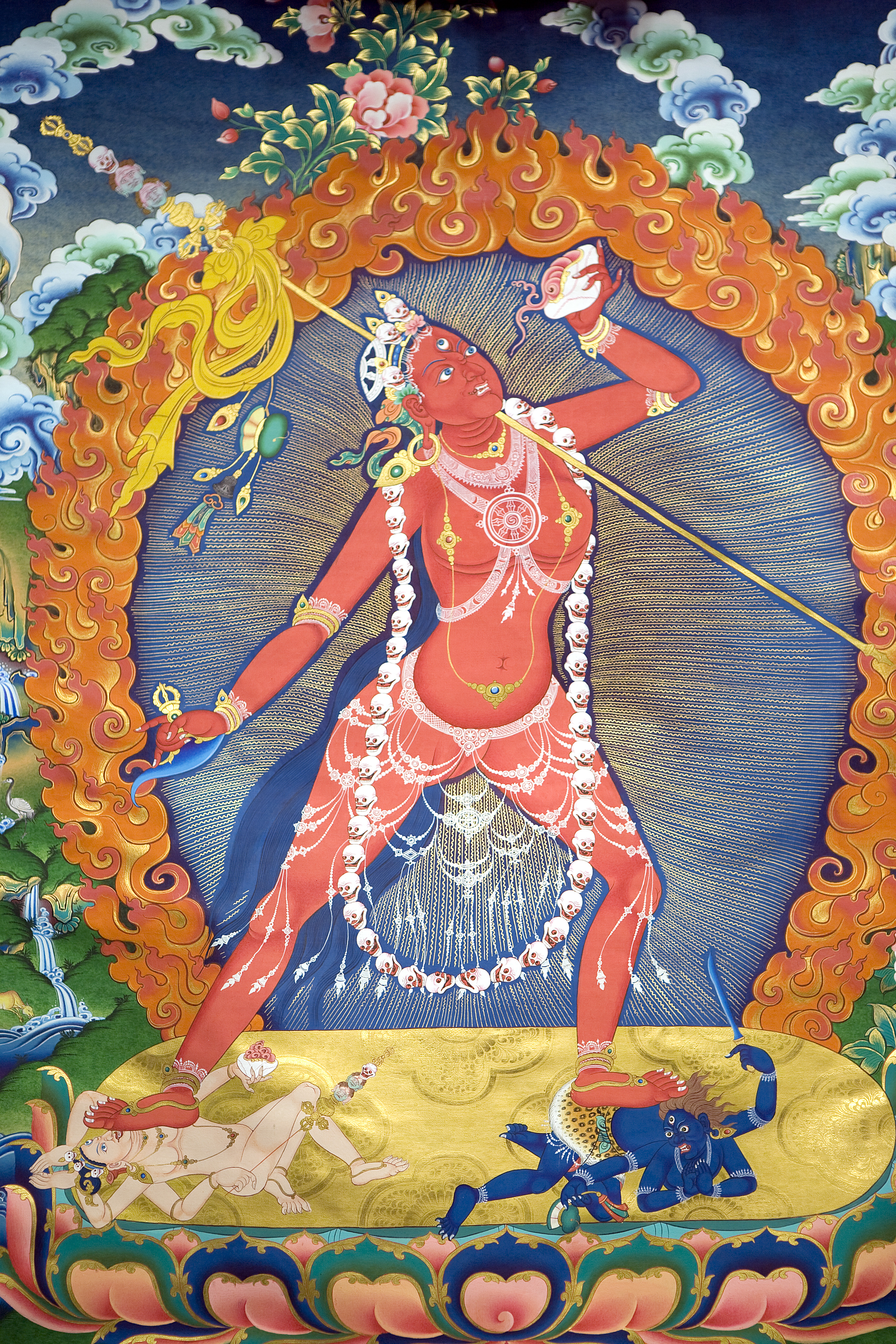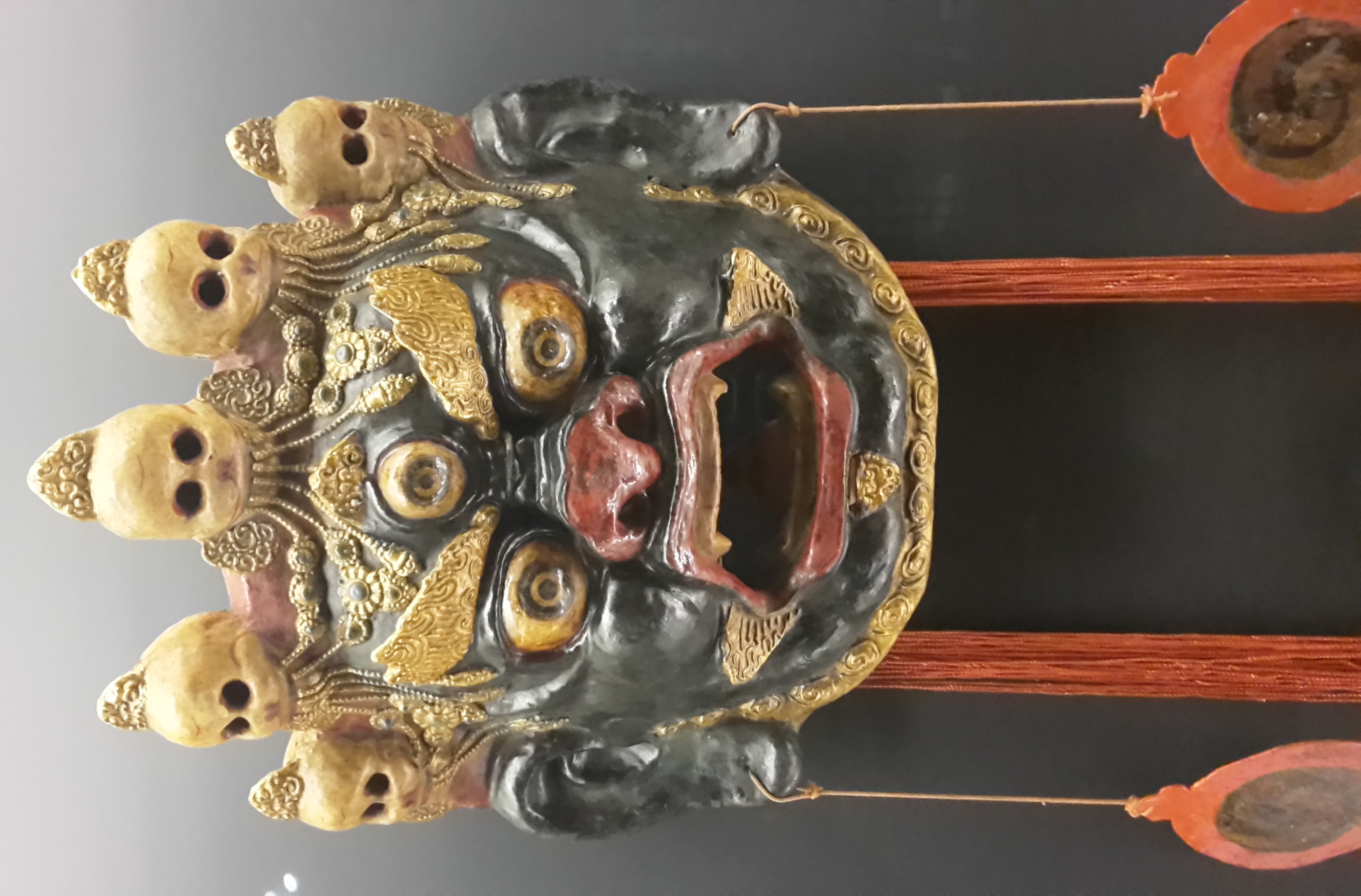|
Shmashana Adhipati
''Shmashana Adhipati'' is a name given to a deity either male or female and also together as a consort, who rules Shmashana, cremation ground. The Shamashana Adhipati literally translates to Lord of Shmashana. The name ''Shmashan Adhipathi'' is given to different deities in Hinduism and Tibetan Buddhism. In Hinduism Shiva is considered to be Lord of Shmashana or ''Shmashana Adhipati''. One epithet for Shiva is "inhabitant of the cremation ground" (Sanskrit: śmaśānavāsin, also spelled Shmashanavasin), referring to this connection. Kali, his consort is known by another name ''Shmashana Kali''. Kali's association with blackness stands in contrast to her consort, Shiva, whose body is covered by the white ashes of the cremation ground in which he meditates, and with which Kali is also associated, as Shmashana Kali is also a protector. She can be used to chase away bad spirits. Thus, together Shiva and Kali are they deity associated with Shmashana as per Hindu religion are called Sh ... [...More Info...] [...Related Items...] OR: [Wikipedia] [Google] [Baidu] |
Dakini
A ḍākinī ( sa, डाकिनी; ; mn, хандарма; ; alternatively 荼枳尼, ; 荼吉尼, ; or 吒枳尼, ; Japanese: 荼枳尼 / 吒枳尼 / 荼吉尼, ''dakini'') is a type of female spirit, goddess, or demon in Hinduism and Buddhism. The concept of the ḍākinī somewhat differs depending on the context and the tradition. For instance, in earlier Hindu texts and East Asian esoteric Buddhism, the term denotes a race of demonesses who ate the flesh and/or vital essence of humans. In Hindu Tantric literature, Ḍākinī is the name of a goddess often associated with one of the six chakras or the seven fundamental elements ('' dhātu'') of the human body. In Nepalese and Tibetan Buddhism, meanwhile, 'ḍākinī' (also wisdom ḍākinī) can refer to both what can be best described as fierce-looking female embodiments of enlightened energy and to human women with a certain amount of spiritual development, both of which can help Tantric initiates attaining enli ... [...More Info...] [...Related Items...] OR: [Wikipedia] [Google] [Baidu] |
Hindu Deities
Hindu deities are the gods and goddesses in Hinduism. The terms and epithets for deities within the diverse traditions of Hinduism vary, and include Deva, Devi, Ishvara, Ishvari, Bhagavān and Bhagavati. The deities of Hinduism have evolved from the Vedic era (2nd millennium BCE) through the medieval era (1st millennium CE), regionally within Nepal, Pakistan, India and in Southeast Asia, and across Hinduism's diverse traditions.Nicholas Gier (2000), Spiritual Titanism: Indian, Chinese, and Western Perspectives, State University of New York Press, , pp. 59-76Jeaneane D. Fowler (2012), The Bhagavad Gita, Sussex Academic Press, , pp. 253-262 The Hindu deity concept varies from a personal god as in Yoga school of Hindu philosophy, to thirty-three major deities in the Vedas, to hundreds of deities mentioned in the Puranas of Hinduism. Illustrations of major deities include Vishnu, Lakshmi, Shiva, Parvati, Brahma and Saraswati. These deities have distinct and complex personalities, ... [...More Info...] [...Related Items...] OR: [Wikipedia] [Google] [Baidu] |
Indian Words And Phrases
Indian or Indians may refer to: Peoples South Asia * Indian people, people of Indian nationality, or people who have an Indian ancestor ** Non-resident Indian, a citizen of India who has temporarily emigrated to another country * South Asian ethnic groups, referring to people of the Indian subcontinent, as well as the greater South Asia region prior to the 1947 partition of India * Anglo-Indians, people with mixed Indian and British ancestry, or people of British descent born or living in the Indian subcontinent * East Indians, a Christian community in India Europe * British Indians, British people of Indian origin The Americas * Indo-Canadians, Canadian people of Indian origin * Indian Americans, American people of Indian origin * Indigenous peoples of the Americas, the pre-Columbian inhabitants of the Americas and their descendants ** Plains Indians, the common name for the Native Americans who lived on the Great Plains of North America ** Native Americans in the Uni ... [...More Info...] [...Related Items...] OR: [Wikipedia] [Google] [Baidu] |
Hindu
Hindus (; ) are people who religiously adhere to Hinduism.Jeffery D. Long (2007), A Vision for Hinduism, IB Tauris, , pages 35–37 Historically, the term has also been used as a geographical, cultural, and later religious identifier for people living in the Indian subcontinent. The term ''"Hindu"'' traces back to Old Persian which derived these names from the Sanskrit name ''Sindhu'' (सिन्धु ), referring to the river Indus. The Greek cognates of the same terms are "''Indus''" (for the river) and "''India''" (for the land of the river). The term "''Hindu''" also implied a geographic, ethnic or cultural identifier for people living in the Indian subcontinent around or beyond the Sindhu (Indus) River. By the 16th century CE, the term began to refer to residents of the subcontinent who were not Turkic or Muslims. Hindoo is an archaic spelling variant, whose use today is considered derogatory. The historical development of Hindu self-identity within the local In ... [...More Info...] [...Related Items...] OR: [Wikipedia] [Google] [Baidu] |
Pyre
A pyre ( grc, πυρά; ''pyrá'', from , ''pyr'', "fire"), also known as a funeral pyre, is a structure, usually made of wood, for burning a body as part of a funeral rite or execution. As a form of cremation, a body is placed upon or under the pyre, which is then set on fire. In discussing ancient Greek religion Religious practices in ancient Greece encompassed a collection of beliefs, rituals, and mythology, in the form of both popular public religion and cult practices. The application of the modern concept of "religion" to ancient cultures has been ..., "pyre" (the normal Greek word for fire anglicized) is also used for the sacred fires at altars, on which parts of the animal sacrifice were burnt as an offering to the deity. Materials Pyres are crafted using wood. The composition of a pyre may be determined through use of charcoal analysis. Charcoal analysis helps to predict composition of the fuel and local forestry of the charcoal being studied. Ireland Specif ... [...More Info...] [...Related Items...] OR: [Wikipedia] [Google] [Baidu] |
Vajrayogini
Vajrayoginī ( sa, italic=yes, Vajrayoginī वज्रयोगिनी; , Dorjé Neljorma; mn, Огторгуйд Одогч, Нархажид, ) is a Tantric Buddhist female Buddha and a . The ''Vajrayogini'' cult dates back to the tenth and twelfth centuries. Vajrayoginī's essence is "great passion" (''maharaga''), a transcendent passion that is free of selfishness and illusion—she intensely works for the well-being of others and for the destruction of ego clinging. She is seen as being ideally suited for people with strong passions, providing the way to transform those passions into enlightened virtues. She is an Anuttarayoga Tantra iṣṭadevatā (meditation deity) and her practice includes methods for preventing ordinary death, intermediate state (bardo) and rebirth ( samsara) by transforming them into paths to enlightenment, and for transforming all mundane daily experiences into higher spiritual paths. Practices associated with her are Chöd and the Six Yogas of ... [...More Info...] [...Related Items...] OR: [Wikipedia] [Google] [Baidu] |
Cakrasaṃvara Tantra
The ''Cakrasaṃvara Tantra'' (, ''khorlo demchok,'' The "Binding of the Wheels" Tantra) is an influential Buddhist Tantra. It is roughly dated to the late eight or early ninth century by David B. Gray (with a ''terminus ante quem'' in the late tenth century). The full title in the Sanskrit manuscript used by Gray's translation is: ''Great King of Yoginī Tantras called the Śrī Cakrasaṃvara'' (''Śrīcakrasaṃvara-nāma-mahayoginī-tantra-rāja''). The text is also called the ''Discourse of Śrī Heruka'' (''Śrīherukābhidhāna'') and the ''Samvara Light'' (''Laghusaṃvara''). "Cakrasaṃvara" may also refer to the main deity in this tantra as well as to a collection of texts or "cycle" associated with the root Cakrasaṃvara tantra. Tsunehiko Sugiki writes that this "Cakrasaṃvara cycle", "is one of the largest collections of Buddhist Yoginītantra literature from the early medieval South Asian world."Sugiki, Tsunehiko. Review of ''David B. Gray, The Cakrasamvara Tantra ... [...More Info...] [...Related Items...] OR: [Wikipedia] [Google] [Baidu] |
Citipati (Buddhism)
Citipati (Sanskrit: चितिपति), Chitipati or Shmashana Adhipati is a protector deity or dharmapala in Tibetan Buddhism and Vajrayana Buddhism of the Himalayas. It is formed of two skeletal deities, one male and the other female, both dancing wildly with their limbs intertwined inside a halo of flames representing change. The Citipati is said to be one of the seventy-five forms of Mahakala. Their symbol is meant to represent both the eternal dance of death as well as perfect awareness. They are invoked as wrathful deities, benevolent protectors of fierce appearance. The dance of the Citipati is commemorated twice annually in Tibet. The citipati should not be confused with the skeleton dancers of the Tibetan Buddhist cham dance tradition. - at [...More Info...] [...Related Items...] OR: [Wikipedia] [Google] [Baidu] |
Standard Tibetan
Lhasa Tibetan (), or Standard Tibetan, is the Tibetan dialect spoken by educated people of Lhasa, the capital of the Tibetan Autonomous Region of China. It is an official language of the Tibet Autonomous Region. In the traditional "three-branched" classification of Tibetic languages, the Lhasa dialect belongs to the Central Tibetan branch (the other two being Khams Tibetan and Amdo Tibetan). In terms of mutual intelligibility, speakers of Khams Tibetan are able to communicate at a basic level with Lhasa Tibetan, while Amdo speakers cannot. Both Lhasa Tibetan and Khams Tibetan evolved to become Tone (linguistics), tonal and do not preserve the word-initial consonant clusters, which makes them very far from Classical Tibetan, especially when compared to the more Linguistic conservatism, conservative Amdo Tibetan. Registers Like many languages, Lhasa Tibetan has a variety of Register (sociolinguistics), language registers: * (Wylie transliteration, Wylie: , literally "wikt:demot ... [...More Info...] [...Related Items...] OR: [Wikipedia] [Google] [Baidu] |



.jpg)


.jpg)

